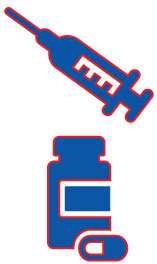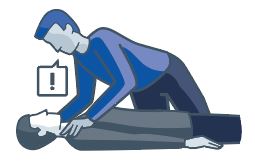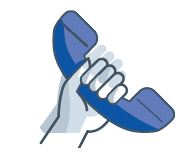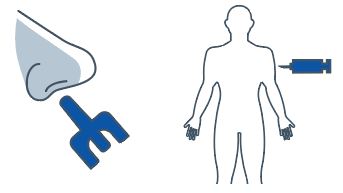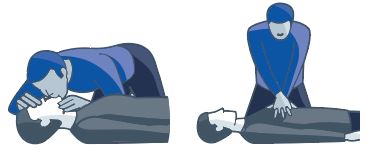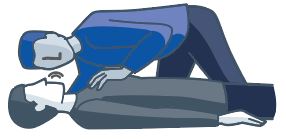Watch Video Training
Signs of an Opioid Overdose
- Blue lips or nails
- Very small pupils
- Cold and clammy skin
- Choking, gurgling or snoring sounds
- Slow, weak, or no breathing
- Difficulty walking, talking – confused
- Can’t wake up, even when shaken
- Vomit may be present
The 5 Steps to Responding to an Opioid Overdose
1) Shout and Shake
- Confirm that your surroundings are safe
- Put on the provided nitrile gloves
- Shout their name and shake their shoulders
2) Call 911
- If the person is unresponsive call 911
- If you are able, direct a specific person to call for you
3) Give Naloxone
- 1 spray into the nostril or 1 injection into the arm or leg
- Pop the top off the vial
- Push the tip of the needle into the rubber port
- Keep the needle below the level of the liquid
- Pull the plunger back to draw the liquid out
- Remove air bubbles
- Find the spot for the injection – three fingers down from the shoulder bone or the middle third of the thigh
- Press the needle in all the way to the hilt
- Press the plunger until it retracts into the barrel
Step 4 – Rescue Breathing and Chest Compressions
- Tilt the person’s head back
- With a gloved finger remove anything from their mouth
- Use the rescue barrier mask – the plastic bit goes between their teeth
- Give 3 breaths
- Give 30 chest compressions
- Repeat the breaths and compressions 3 more times
Step 5 – Is it working?
- If necessary, repeat step 3 giving Naloxone and step 4 rescue breathing and chest compressions after 2 to 3 minutes
- Stay with them until paramedics arrive
Recovery Position
- When the person shows signs that they are improving put them in the recovery position
- Lower arm extended
- Upper arm under the chin supporting the head
- Upper knee bent over to prevent them rolling on to their stomach
- Head tilted slightly back to open up the airway
- Make sure you are okay
